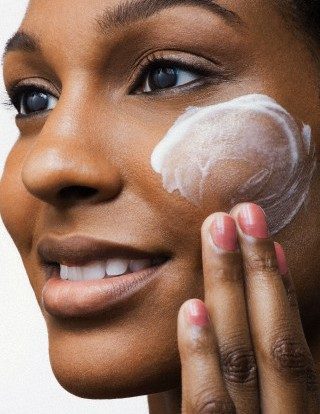Reviews of Scar Treatments:
Best Scar Treatments (in priority order):
Overall Rating: 98.4% (product & cost comparison)
Product Claims:
Scarinex is a revolutionary product formulation that includes very effective ingredients proven by research to reduce and eliminate scars. This formula has two products, the first being the Scarinex gel containing five different kinds of 100% medical grade silicone. This is the same material that doctors use for scar treatment. The second product is a powerful skin rejuvenator that feeds and nourishes skin to help regenerate healthy tissue.
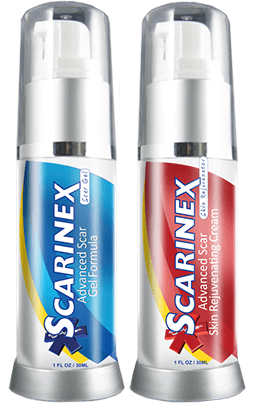 The effectiveness of Scarinex comes from a powerful formulation of ingredients. One by one, the ingredients were thoroughly looked at by reviewers to see their actual benefits in scar healing. There are also over 50 studies proving the product’s benefits in reducing the appearance of all types of scars. It is so beneficial even doctors endorse the product.
The effectiveness of Scarinex comes from a powerful formulation of ingredients. One by one, the ingredients were thoroughly looked at by reviewers to see their actual benefits in scar healing. There are also over 50 studies proving the product’s benefits in reducing the appearance of all types of scars. It is so beneficial even doctors endorse the product.
The Scarinex scar removal gel seals in moisture to the skin and helps reduce inflammation, pain and swelling to the area. The moisture helps to reduce the appearance of scars and begin the process of healthy tissue regeneration. The rejuvenator feeds the skin and encourages new healthy skin cells to grow.
One top attribute we found with this product is that it is formulated to work on many types of scars that people may face.
It works on scars resulting from surgical incisions, cuts, abrasions, burns, piercings and acne as well as keloids, hypertrophic scars and stretch marks.
We were also impressed with the fact that Scarinex is produced in an FDA-registered laboratory and held to the very high quality standards of GMP (Good Manufacturing Practices) certification.
Scarinex has no reported side effects. This product is safe for use by anyone and comes with a 100% money-back guarantee.
Value:
Scarinex offers the best package deal out of all the products we reviewed. If you buy two bottles, you get two bottles free. This brings the price to $24.95 per bottle. At this price with a money-back guarantee, there is no better value for scar removal.
Our Conclusion:
We found Scarinex to be the top product for scar removal on the market, with positive consumer reviews showing it to be very effective and a great value.
Overall Rating: 81.2%
Product Claims:
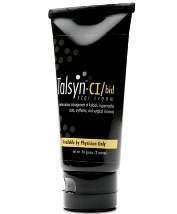 Talsyn-Cl came in at number two on our list and is a good product for fading the appearance of scars caused by surgery and keloid and hypertrophic scars. We gave this product our number two spot because it wasn’t quite formulated to treat the number of scars that our number product treats.
Talsyn-Cl came in at number two on our list and is a good product for fading the appearance of scars caused by surgery and keloid and hypertrophic scars. We gave this product our number two spot because it wasn’t quite formulated to treat the number of scars that our number product treats.
We were happy to see that Talsyn-CI carries doctor endorsement, and that is a plus. It also helps to reduce redness in scarred areas. This product did have some lower consumer ratings and reviews stating that scars only faded slightly after a few months of use.
Talsyn-CI is formulated with a lipid compound with a blend of fatty acids, peptides and botanicals to help nourish healing skin and encourage more collagen deposits in the area. Collagen usually helps during the initial healing of a wound, so this product needs to be used as early as possible in the healing process. Our number one product helps anytime, even years after wounds have healed into scars. Studies show Talsyn-CI only has a 62% reduction rate on older scars.
This is an all-natural and safe product. It does have one reported side effect of causing possible redness. The manufacturer recommends using this product twice daily for 9 to 12 weeks to see improvement.
Value:
Talsyn-CI sells for $39.95 a tube and $159.80 for four tubes. This price was a bit higher than our number one product’s and, considering the time it takes to see results with this product, may add up over time.
Our Conclusion:
Talsyn-CI is a good formula with all-natural ingredients that are designed to nourish the skin and reduce scars at the outset. It fell to our number two spot because it has fewer ingredients and takes a longer time to show effectiveness.
Overall Rating: 78.6%
Product Claims:
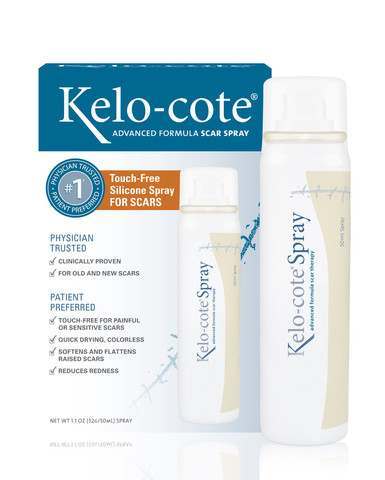 Kelo-cote is a good product with biocompatible and bio-inert silicones that can help soften and flatten scars and make the skin appear smoother. It fell to our number three spot because of it lacks ingredients that encourage healthy skin regeneration.
Kelo-cote is a good product with biocompatible and bio-inert silicones that can help soften and flatten scars and make the skin appear smoother. It fell to our number three spot because of it lacks ingredients that encourage healthy skin regeneration.
Kelo-cote creates a moisture barrier over the scar to help soften the scar and smooth the skin. It locks in moisture and helps improve elasticity. This product contains 100% silicone gel, which has been found scientifically to reduce scarring. It needed just a few more ingredients to help provide moisture and nutrients to help the skin regenerate. It received a rating of “very good” by 24% of consumers.
This product works by using polysiloxane, a long chain polymer that forms a waterproof, semi-occlusive layer to create a protective barrier over the area of scarring. While this is a quality ingredient, the product needs a little more ingredients to move up on our list.
Value:
Kelo-cote sells from $21.99 for a small tube up to $109.99 for a large tube. It takes around 2 to 3 months to begin to see results.
Our Conclusion:
Kelo-cote has a quality ingredient that can help protect the skin during healing. It needed a few more ingredients to feed and nourish the skin and would have moved up on our list if it covered more types of scars.
Overall Rating: 75.4%
Product Claims:
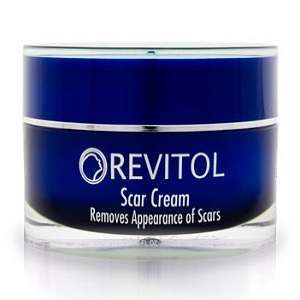 Revitol is a good product for skin rejuvenation using all-natural and safe ingredients. It fell to our number four spot because it lacks ingredients that help encourage the production of collagen.
Revitol is a good product for skin rejuvenation using all-natural and safe ingredients. It fell to our number four spot because it lacks ingredients that help encourage the production of collagen.
We were happy to see this formulation uses 100% all-natural and safe ingredients. It can help fade scars from surgery, burns, acne and cuts. It needed more ingredients to help increase moisture and nourish the skin. Our top product covered a few more scar types and had more nutrients in its formulation.
The manufacturer of Revitol states it can fade most scars. While this is good, its effectiveness was not as good as our number one product’s. Revitol’s effectiveness is reported to take 2 to 6 months of twice-daily use, while our top product works in a matter of weeks as reported by users.
Value:
Revitol sells for $49.95 for one bottle and $149.90 for four bottles. This is considerably more expensive than our top product and could definitely add up over time. We feel more ingredients need to be included to increase the value of the product.
Our Conclusion:
Revitol can help rejuvenate the skin with long-term use over time. It does have some good ingredients that are safe and all natural. It made our number four spot because it did not cover as many types of scars as our number one product and was not as good a value.
Overall Rating: 68.7%
Product Claims:
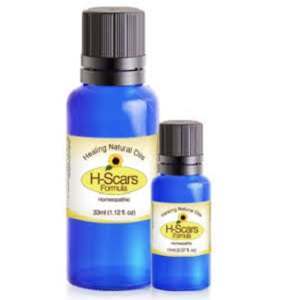 H-Scars is good because it uses 100% all-natural and organic ingredients that can help reduce the appearance of scars. It came in at number five because of its lack of ingredients that help nourish the skin and encourage tissue regeneration. Our number one product is formulated to nourish and regenerate skin cells.
H-Scars is good because it uses 100% all-natural and organic ingredients that can help reduce the appearance of scars. It came in at number five because of its lack of ingredients that help nourish the skin and encourage tissue regeneration. Our number one product is formulated to nourish and regenerate skin cells.
This product does have some good essential oils derived from plants that help improve skin tone and soften the skin. One ingredient, immortelle, helps reduce inflammation to the skin and can help some with tissue regeneration.
There are also a few other herbal ingredients that can help nourish skin and fade scars. H-Scars fell short of our top product because it didn’t have enough ingredients to help lock in moisture and encourage healing. H-Scars has no reported side effects and is all natural and organic. Essential oils can help moisturize skin, but with scars a barrier is needed to lock in moisture. Our top product is designed to lock in moisture to increase healing.
Value:
H-Scars sells for $69.95 a bottle. This is the highest price out of all of our products and much higher than our top product. The four-bottle deal is $279.80. The manufacturer needs to include more nourishing and moisturizing ingredients to increase the product value.
Our Conclusion:
H-Scars is good because it uses essential oils that are all natural and safe. It came in at number five because it didn’t have enough ingredients in its formulation to increase moisture and tissue regeneration. Our editors also felt it was on the pricey side for scar removal.
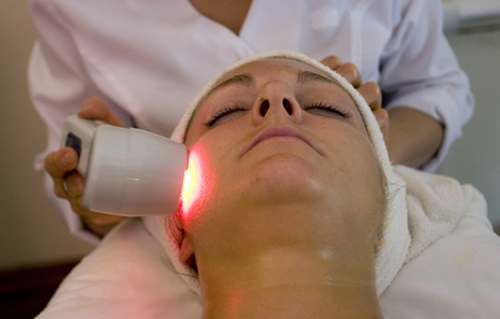
 You can treat mild to moderate burn scars with safe and effective all-natural treatments. When you use natural remedies for burn scars, you can reduce the redness of scar tissue and have healthy looking, smoother skin. These types of treatments have no side effects, and they are relatively inexpensive compared to pricey medical treatments. One popular treatment option is Scarinex. This product has been proven to be very effective in reducing burn scars and many other types of scars.
You can treat mild to moderate burn scars with safe and effective all-natural treatments. When you use natural remedies for burn scars, you can reduce the redness of scar tissue and have healthy looking, smoother skin. These types of treatments have no side effects, and they are relatively inexpensive compared to pricey medical treatments. One popular treatment option is Scarinex. This product has been proven to be very effective in reducing burn scars and many other types of scars.
 Subscribe Now
Subscribe Now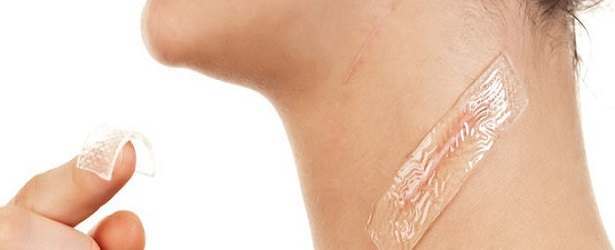
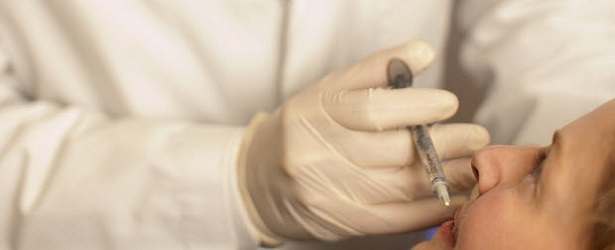
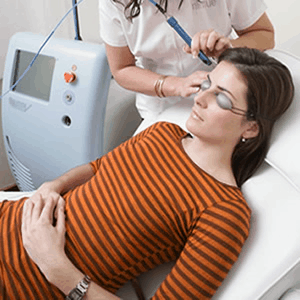 Laser treatment for scar removal can help diminish large scars. Performed by a physician, it is a type of surgery in which a laser is directed at the scar and any tissue surrounding the scar. Since this is an invasive procedure, doctors usually don’t elect to do this treatment unless all other scar removal methods have failed.
Laser treatment for scar removal can help diminish large scars. Performed by a physician, it is a type of surgery in which a laser is directed at the scar and any tissue surrounding the scar. Since this is an invasive procedure, doctors usually don’t elect to do this treatment unless all other scar removal methods have failed. When getting ready for laser treatment scar removal, there are a few things you must do before going to the doctor. Preparations alleviate side effects and complications from the procedure.
When getting ready for laser treatment scar removal, there are a few things you must do before going to the doctor. Preparations alleviate side effects and complications from the procedure.
 Sometimes it can be hard to tell the difference between keloid and hypertrophic scars. It is important to understand the difference because the treatment for each is very different. Knowing exactly whether a scar is hypertrophic or keloid will help you
Sometimes it can be hard to tell the difference between keloid and hypertrophic scars. It is important to understand the difference because the treatment for each is very different. Knowing exactly whether a scar is hypertrophic or keloid will help you  The reasons behind the tendency to develop keloid scars are not completely known. Several studies show there may be a defect in the immune system response that causes it to overreact to wounds.
The reasons behind the tendency to develop keloid scars are not completely known. Several studies show there may be a defect in the immune system response that causes it to overreact to wounds.
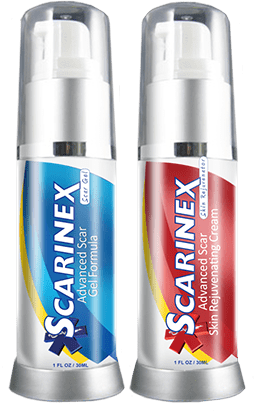 Silicone-based gels can be very effective in scar removal. The popular product
Silicone-based gels can be very effective in scar removal. The popular product 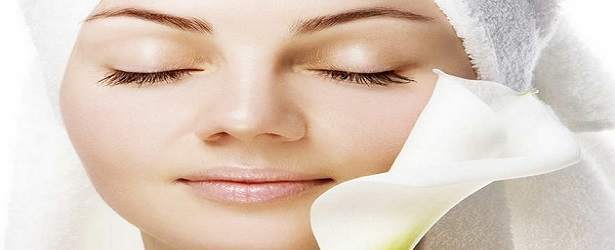
 Talsyn-Cl came in at number two on our list and is a good product for fading the appearance of scars caused by surgery and keloid and hypertrophic scars. We gave this product our number two spot because it wasn’t quite formulated to treat the number of scars that our number product treats.
Talsyn-Cl came in at number two on our list and is a good product for fading the appearance of scars caused by surgery and keloid and hypertrophic scars. We gave this product our number two spot because it wasn’t quite formulated to treat the number of scars that our number product treats. Kelo-cote is a good product with biocompatible and bio-inert silicones that can help soften and flatten scars and make the skin appear smoother. It fell to our number three spot because of it lacks ingredients that encourage healthy skin regeneration.
Kelo-cote is a good product with biocompatible and bio-inert silicones that can help soften and flatten scars and make the skin appear smoother. It fell to our number three spot because of it lacks ingredients that encourage healthy skin regeneration. Revitol is a good product for skin rejuvenation using all-natural and safe ingredients. It fell to our number four spot because it lacks ingredients that help encourage the production of collagen.
Revitol is a good product for skin rejuvenation using all-natural and safe ingredients. It fell to our number four spot because it lacks ingredients that help encourage the production of collagen. H-Scars is good because it uses 100% all-natural and organic ingredients that can help reduce the appearance of
H-Scars is good because it uses 100% all-natural and organic ingredients that can help reduce the appearance of 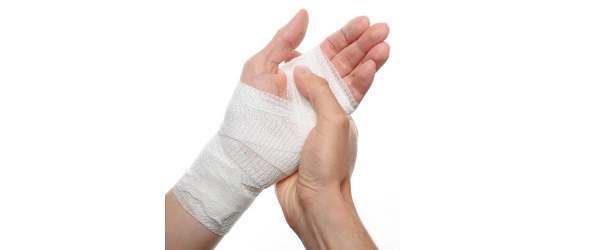


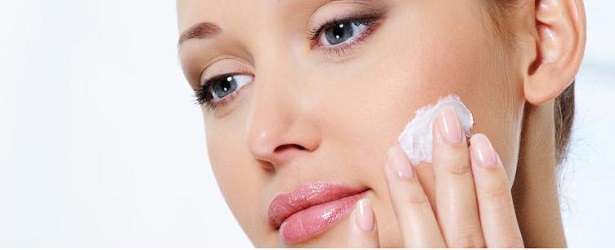
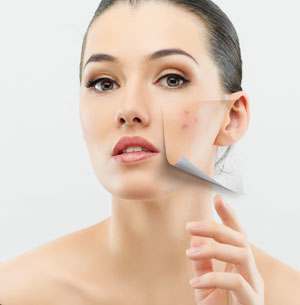 It is important to know that medical treatments for scar removal do not completely remove scars, can be costly and are not usually covered by insurance when they are for cosmetic reasons only. Most acne scar treatments only diminish the appearance of scars, while other treatments out there are very effective for fading scars and at helping regenerate healthy new skin . Before beginning treatment of acne scars, know what type of scar you are working with.
It is important to know that medical treatments for scar removal do not completely remove scars, can be costly and are not usually covered by insurance when they are for cosmetic reasons only. Most acne scar treatments only diminish the appearance of scars, while other treatments out there are very effective for fading scars and at helping regenerate healthy new skin . Before beginning treatment of acne scars, know what type of scar you are working with.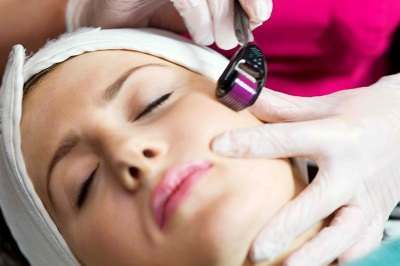 Finding an acne scar treatment that suits your needs depends on what you want. Medical treatment is not necessary if scarring is minor to moderate. If scars are severe, you may need professional help with them. People usually look for treatment and help when scars cause issues with self-esteem, and they are unable to fade them on their own at home.
Finding an acne scar treatment that suits your needs depends on what you want. Medical treatment is not necessary if scarring is minor to moderate. If scars are severe, you may need professional help with them. People usually look for treatment and help when scars cause issues with self-esteem, and they are unable to fade them on their own at home.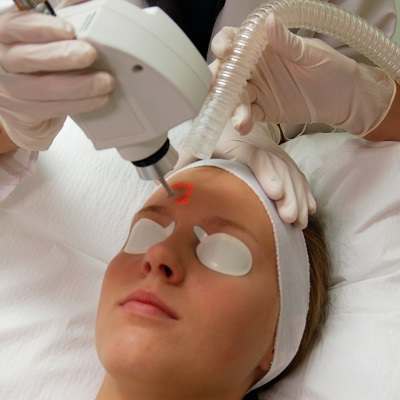 Laser Treatments –
Laser Treatments – 

 Cucumber Paste – Take cucumber and grind it into a paste. Spread over acne scars to help reduce redness and inflammation. Cucumber helps moisturize the skin and speed up healing.
Cucumber Paste – Take cucumber and grind it into a paste. Spread over acne scars to help reduce redness and inflammation. Cucumber helps moisturize the skin and speed up healing.
 You can make a paste of baking soda and water to exfoliate the skin. When you exfoliate, take off the dead skin cells to reveal a fresh new layer of skin. This process is very beneficial to scar healing. Baking soda helps scars appear flatter, reduces inflammation, and alleviates redness.
You can make a paste of baking soda and water to exfoliate the skin. When you exfoliate, take off the dead skin cells to reveal a fresh new layer of skin. This process is very beneficial to scar healing. Baking soda helps scars appear flatter, reduces inflammation, and alleviates redness. 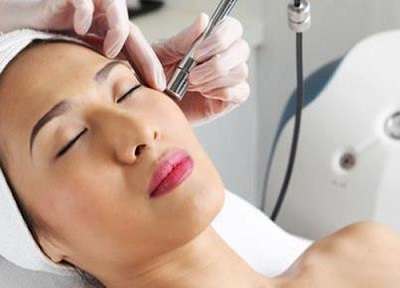

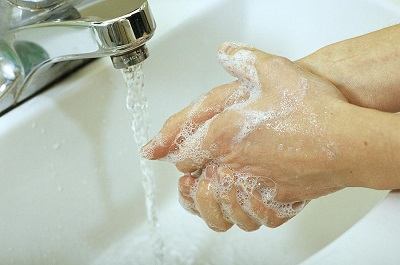 Taking care of wounds properly is the first and most important part of preventive care. Keep the wound clean and dry. Flush new wounds with water, and make sure all dirt is removed from the wound bed. Clean daily with mild soap and water. Keep a sterile bandage over the wound to keep it clean.
Taking care of wounds properly is the first and most important part of preventive care. Keep the wound clean and dry. Flush new wounds with water, and make sure all dirt is removed from the wound bed. Clean daily with mild soap and water. Keep a sterile bandage over the wound to keep it clean.